Do you have a question about the Panasonic KX-TG283CSK and is the answer not in the manual?
Introduces the manual and directs users to the Getting Started section for initial setup.
Details the different models and their components.
Lists and illustrates the accessories included with the product.
Provides critical safety warnings for power connection, installation, and operation.
Covers battery type, handling precautions, and recycling information.
Offers advice on base unit placement and environmental factors for optimal performance.
Details technical specifications like standard, frequency range, power, and operating conditions.
Guides through connecting the base unit, charger, and handling initial battery installation.
Explains the process of charging the handset batteries and indicators.
Describes how the unit functions during a power outage.
Explains the eco mode feature for reducing power consumption.
Identifies and explains the buttons and indicators on the base unit.
Identifies and explains the buttons and indicators on the handset.
Explains the meaning of icons displayed on the base unit screen.
Explains the meaning of icons displayed on the handset screen.
Instructions on how to attach and remove the belt clip.
How to set the display language and voice guidance language.
Setting the date/time and selecting the dialing mode (Tone/Pulse).
Guides on making calls using the base unit, handset, and speakerphone.
How to use the redial list and adjust call volume.
Using pauses in calls and answering incoming calls.
Adjusting ringer volume and putting calls on hold.
Using mute, flash, and features for Call Waiting services.
Using temporary tone dialing, clarity booster, and equalizer.
How to join calls and manage privacy mode settings.
Steps for adding new entries and managing groups in the phonebook.
How to search, edit, and delete phonebook entries.
Using the chain dial feature for accessing stored numbers during calls.
Explains two methods to access and program settings.
Provides a table of menu options, direct command codes, and corresponding pages.
Details settings for ringer volume, display contrast, and language.
Covers viewing the caller list and configuring answering device options.
Instructions for accessing Voice Mail and setting up intercom functions.
Configuring date, time, ringer settings, and other initial preferences.
Configuring message alerts, auto talk, and telephone line settings.
Procedures for handset registration and changing language settings.
How to set alarms and schedule periods of silence using night mode.
Customizing handset names for intercom use and setting display preferences.
Setting up call blocking by number or for unknown callers, and managing block lists.
Procedures for registering new handsets to the base unit.
Steps for pairing new handsets and removing existing ones from the base unit.
How caller ID information is displayed and logged.
Using voice announcements for callers and assigning specific ringers to groups.
Enabling the service and selecting options for handling second calls.
How to view, modify, delete, and save caller information.
Turning the system on/off and setting up call screening.
Recording and managing greeting messages for callers.
Using pre-recorded greetings, playing back messages, and erasing them.
Controls for message playback and calling back callers.
How to access the answering system remotely using a phone and managing access codes.
Using voice guidance and remote commands for system operation.
Setting the number of rings before the unit answers calls.
Setting the maximum recording time per caller and configuring message alert notifications.
Setting up the VM access number and managing tone detection.
How the unit indicates new VM messages and how to listen to them.
Procedures for initiating and responding to intercom calls between units.
Using the locator feature and transferring calls to other units.
Step-by-step instructions for mounting the base unit on a wall.
Instructions for installing the charger securely.
Explains various display messages and their causes/solutions.
Addresses common issues like the handset not turning on or the unit not working.
Resolving problems with display language, handset registration, and battery recharge.
Troubleshooting issues with dial tone, call clarity, and intercom functionality.
Addresses problems with caller information not displaying, being late, or not being announced.
Resolving problems with message recording, remote operation, and liquid damage.
Information regarding Industry Canada compliance and technical specifications.
Details on RF exposure limits and compatibility with hearing aids.
Details the terms, conditions, limitations, and contact information for the product warranty.
Introduces the manual and directs users to the Getting Started section for initial setup.
Details the different models and their components.
Lists and illustrates the accessories included with the product.
Provides critical safety warnings for power connection, installation, and operation.
Covers battery type, handling precautions, and recycling information.
Offers advice on base unit placement and environmental factors for optimal performance.
Details technical specifications like standard, frequency range, power, and operating conditions.
Guides through connecting the base unit, charger, and handling initial battery installation.
Explains the process of charging the handset batteries and indicators.
Describes how the unit functions during a power outage.
Explains the eco mode feature for reducing power consumption.
Identifies and explains the buttons and indicators on the base unit.
Identifies and explains the buttons and indicators on the handset.
Explains the meaning of icons displayed on the base unit screen.
Explains the meaning of icons displayed on the handset screen.
Instructions on how to attach and remove the belt clip.
How to set the display language and voice guidance language.
Setting the date/time and selecting the dialing mode (Tone/Pulse).
Guides on making calls using the base unit, handset, and speakerphone.
How to use the redial list and adjust call volume.
Using pauses in calls and answering incoming calls.
Adjusting ringer volume and putting calls on hold.
Using mute, flash, and features for Call Waiting services.
Using temporary tone dialing, clarity booster, and equalizer.
How to join calls and manage privacy mode settings.
Steps for adding new entries and managing groups in the phonebook.
How to search, edit, and delete phonebook entries.
Using the chain dial feature for accessing stored numbers during calls.
Explains two methods to access and program settings.
Provides a table of menu options, direct command codes, and corresponding pages.
Details settings for ringer volume, display contrast, and language.
Covers viewing the caller list and configuring answering device options.
Instructions for accessing Voice Mail and setting up intercom functions.
Configuring date, time, ringer settings, and other initial preferences.
Configuring message alerts, auto talk, and telephone line settings.
Procedures for handset registration and changing language settings.
How to set alarms and schedule periods of silence using night mode.
Customizing handset names for intercom use and setting display preferences.
Setting up call blocking by number or for unknown callers, and managing block lists.
Procedures for registering new handsets to the base unit.
Steps for pairing new handsets and removing existing ones from the base unit.
How caller ID information is displayed and logged.
Using voice announcements for callers and assigning specific ringers to groups.
Enabling the service and selecting options for handling second calls.
How to view, modify, delete, and save caller information.
Turning the system on/off and setting up call screening.
Recording and managing greeting messages for callers.
Using pre-recorded greetings, playing back messages, and erasing them.
Controls for message playback and calling back callers.
How to access the answering system remotely using a phone and managing access codes.
Using voice guidance and remote commands for system operation.
Setting the number of rings before the unit answers calls.
Setting the maximum recording time per caller and configuring message alert notifications.
Setting up the VM access number and managing tone detection.
How the unit indicates new VM messages and how to listen to them.
Procedures for initiating and responding to intercom calls between units.
Using the locator feature and transferring calls to other units.
Step-by-step instructions for mounting the base unit on a wall.
Instructions for installing the charger securely.
Explains various display messages and their causes/solutions.
Addresses common issues like the handset not turning on or the unit not working.
Resolving problems with display language, handset registration, and battery recharge.
Troubleshooting issues with dial tone, call clarity, and intercom functionality.
Addresses problems with caller information not displaying, being late, or not being announced.
Resolving problems with message recording, remote operation, and liquid damage.
Information regarding Industry Canada compliance and technical specifications.
Details on RF exposure limits and compatibility with hearing aids.
Details the terms, conditions, limitations, and contact information for the product warranty.
| Brand | Panasonic |
|---|---|
| Model | KX-TG283CSK |
| Category | Answering Machine |
| Language | English |
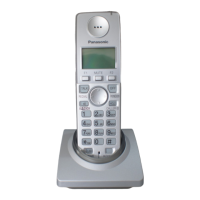

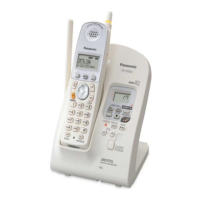

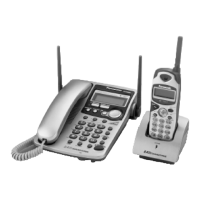
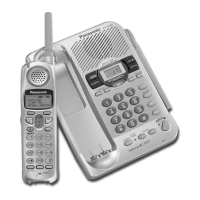
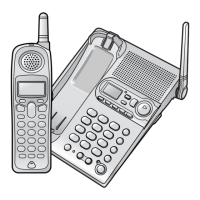
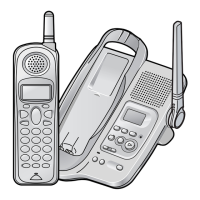




